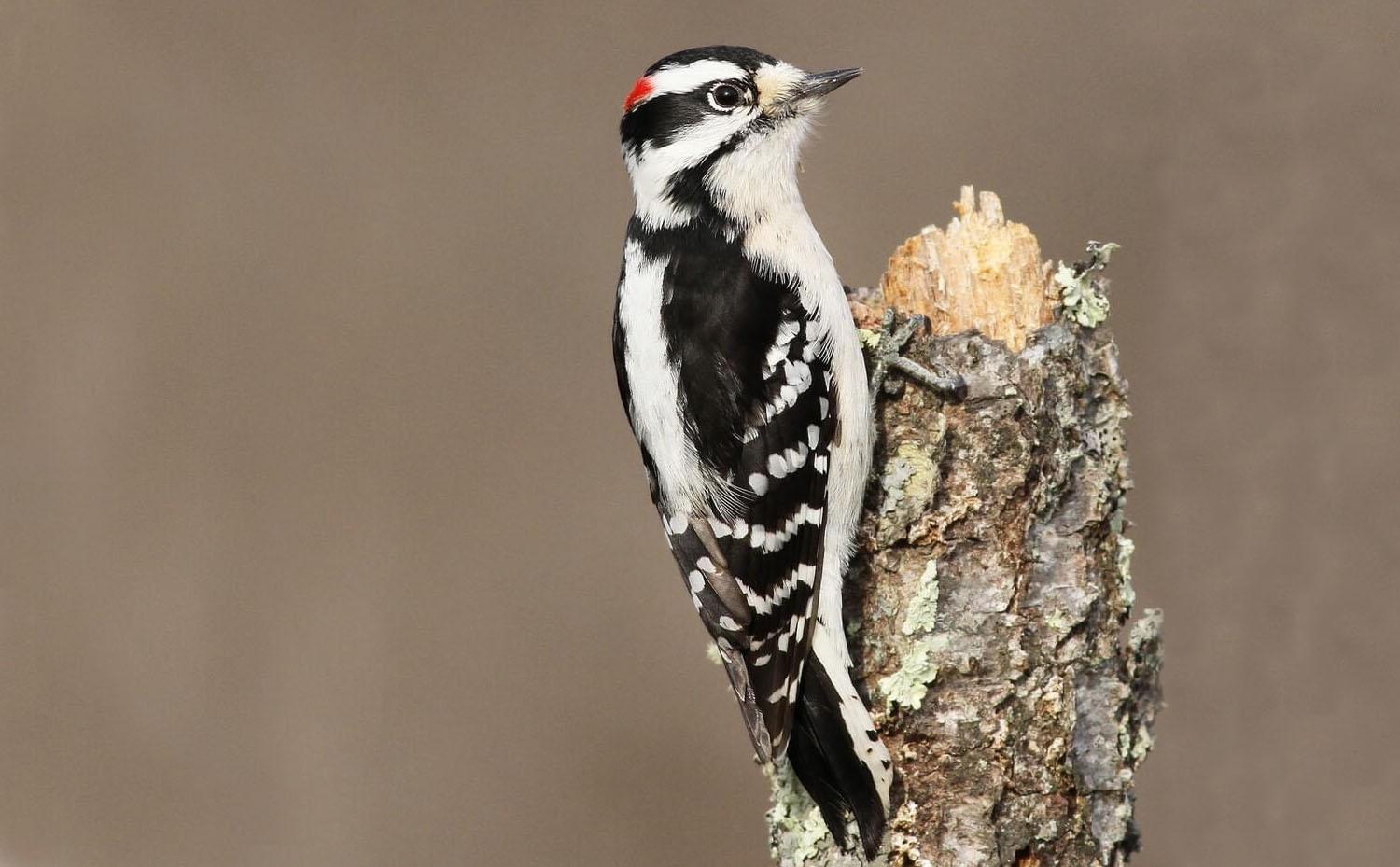Woodland Wildlife Spotlight: Downy Woodpecker
From Fall 2022 issue of Branching Out. Subscribe to Branching Out here. Read more Woodland Wildlife Spotlights here.

Male adult downy woodpecker. Photo © Evan Lipton| Macaulay Library
From Fall 2022 issue of Branching Out. Subscribe to Branching Out here. Read more Woodland Wildlife Spotlights here.
Maryland is home to seven species of woodpeckers. They are sometimes easier to hear than to see; you may hear them as you walk through a woodland on a calm late fall or winter day without actually seeing them among the bare trees, or you may get a glimpse of one flying past without being able to identify it. Unlike soaring or roosting birds like hawks or owls, woodpeckers tend to be more elusive, and you may have them in your woods and not even know it. That is certainly the case for the downy woodpecker, which is the smallest of the species that calls Maryland home.
The downy woodpecker’s size is between that of a sparrow and a robin, and has been compared to that of a chipmunk, but it is well-adapted to a wide variety of habitats across the state and the continent, only avoiding the arid Southwest. The species can be found in Maryland year-round, inhabiting both wilderness areas and regenerated woodlands, and generally prefers open woodlands of deciduous trees. They are often found in suburban yards as well, visiting backyard bird feeders during the winter, especially if the feeders offer suet.
| Downy Woodpecker Basics |
|---|

Appearance: Black and white striped head. Males have red stripe on back of head. White chest. Black wings with white spots. Size: 5.5-6.7 inches long. Wingspan: 10-12 inches. Weight: 0.7—1.0 ounce Lifespan: The oldest recorded downy woodpecker was at least 11 years old; a banded bird was captured 11 years after first banding and released. |
Its natural diet consists mostly of insects, especially beetles and ants, along with native pests such as fall webworms, bark beetles, and tent caterpillars. It has apparently also developed a taste for the invasive emerald ash borer. Like many woodpeckers, they climb up and down trees, but given their light weight, they can also climb out onto branches and have been known to acrobatically revolve around them and hang upside down. During the spring and summer, they will mostly glean their food from the exteriors of trees, doing more tapping and excavating in the winter. They will also consume berries and grains, sometimes perching on tall grasses to pick at seedheads.
During the fall and early winter, males and females will forage in separate areas before pairing up to mate in late winter. Both use drumming to attract a mate, with the male gradually approaching the female. The drumming can involve up to 17 impacts per second. After pairing up, they will excavate a nest, which may take up to two weeks to complete. They may choose a dead tree, a dead portion
of a tree, or human-made structures such as a wooden fence post. They drop woodchips inside and the female will lay 3-8 white eggs measuring less than an inch across each. Information about incubation varies, with the Audubon Society saying that both male and female do so, while the Maryland DNR contends it is performed mostly by the male. In either case, incubation lasts about twelve days, and both male and female will feed the young with billfuls of insects.
The young leave the nest after about three weeks and may follow the parents for a few weeks after that before striking out on their own. In winter, they may join other like-sized birds such as nuthatches and chickadees for protection from predators.
The downy woodpecker may be easily mistaken for the hairy woodpecker, which is also native to Maryland. They have very similar markings, and while the hairy woodpecker is larger, this is only an effective means of identifying if the two birds are in proximity. One of the more useful methods is to observe the bill. On the downy woodpecker, the bill is short and relatively stubby; on the hairy woodpecker, it is longer and more slender.
Downy woodpecker populations seem to be stable across the continent, as they have adapted well to the human-built environment. The shift from wooden fence posts to metal ones may have affected their populations. However, thinning forests benefits them as they do well in younger woodlands.
Branching Out, Vol. 30, no. 4 (Fall 2022)
Branching Out is the free, quarterly newsletter of the Woodland Stewardship Education program. For more than 25 years, Branching Out has kept Maryland woodland owners and managers informed about ways to develop and enhance their natural areas, how to identify and control invasive plants and insects, and about news and regional online and in-person events.